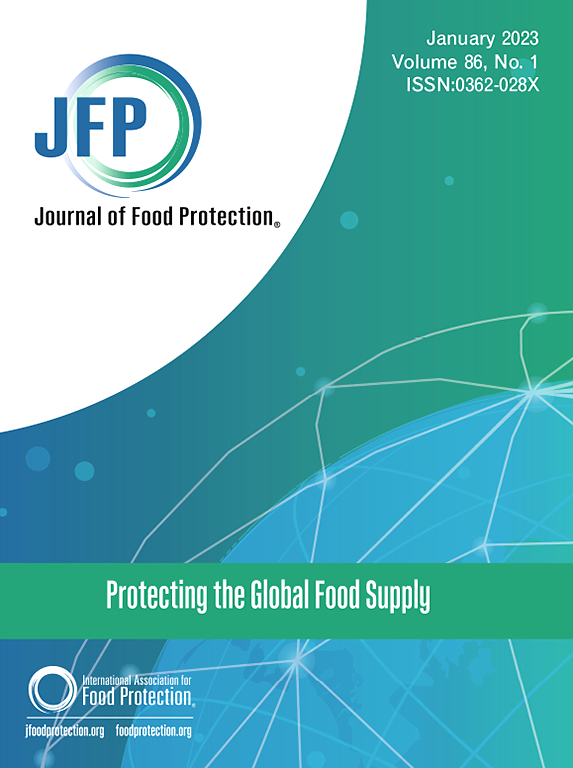Dietary Risk Assessment and Classification Model Based on Trace Elemental Analysis in Commercially Available Dried Seaweed Products
IF 2.1
4区 农林科学
Q3 BIOTECHNOLOGY & APPLIED MICROBIOLOGY
引用次数: 0
Abstract
Seaweed, particularly kombu, wakame, and nori, has become increasingly popular food in Western nations. In the present study, commercially available edible seaweeds (n = 100), imported from China and South Korea, and purchased from local supermarkets in Tel Aviv, Israel, were analyzed in a recent study to assess 22 trace element concentrations for consumer health risk assessment and to construct an authenticity classification. Trace elements showed a broad concentration range, with copper (Cu), manganese (Mn), zinc (Zn), cadmium (Cd), selenium (Se), and tin (Sn) levels exceeding previously reported averages by at least double. Nori contained more Cu, vanadium (V), and molybdenum (Mo), while kombu and wakame had significantly higher iodine and total arsenic (total As) levels. Despite negligible health risks from chronic exposure to toxic elements, weekly chronic consumption of kombu and wakame may expose consumers to hazardous concentrations of iodine. In fact, kombu increased weekly iodine intake by 400–800%, and wakame by 159% and 95% in children and adults, respectively. Hence, regular consumption by children of 5 g of kombu seaweed per week, which corresponds to the average weekly intake of dried seaweed in the European population, is strongly discouraged. As for wakame, the consumption should be limited to no more than once a month, particularly for children. Finally, the study successfully classified the types of seaweed, showcasing the potential for an authenticity method for seaweed products.
基于市售干海藻产品微量元素分析的膳食风险评估与分类模型
海藻,尤其是海带、裙带菜和海苔,在西方国家越来越受欢迎。本研究选取了从中国和韩国进口,并在以色列特拉维夫当地超市购买的市售食用海藻(n = 100),对其22种微量元素浓度进行了分析,用于消费者健康风险评估,并构建了真实性分类。微量元素显示出较宽的浓度范围,铜(Cu)、锰(Mn)、锌(Zn)、镉(Cd)、硒(Se)和锡(Sn)的含量超过先前报道的平均水平至少两倍。紫菜含有更多的Cu、钒(V)和钼(Mo),而海带和裙带菜的碘和总砷(总砷)含量明显较高。尽管长期接触有毒元素的健康风险可以忽略不计,但每周长期食用海带和裙带菜可能会使消费者接触到有害浓度的碘。事实上,海带使儿童和成人的每周碘摄入量分别增加了400-800%,裙带菜增加了159%和95%。因此,强烈建议儿童每周定期食用5克海带,这相当于欧洲人口每周干海带的平均摄入量。至于裙带菜,应该限制在一个月不超过一次,尤其是儿童。最后,该研究成功地对海藻的类型进行了分类,展示了海藻产品真实性方法的潜力。
本文章由计算机程序翻译,如有差异,请以英文原文为准。
求助全文
约1分钟内获得全文
求助全文
来源期刊

Journal of food protection
工程技术-生物工程与应用微生物
CiteScore
4.20
自引率
5.00%
发文量
296
审稿时长
2.5 months
期刊介绍:
The Journal of Food Protection® (JFP) is an international, monthly scientific journal in the English language published by the International Association for Food Protection (IAFP). JFP publishes research and review articles on all aspects of food protection and safety. Major emphases of JFP are placed on studies dealing with:
Tracking, detecting (including traditional, molecular, and real-time), inactivating, and controlling food-related hazards, including microorganisms (including antibiotic resistance), microbial (mycotoxins, seafood toxins) and non-microbial toxins (heavy metals, pesticides, veterinary drug residues, migrants from food packaging, and processing contaminants), allergens and pests (insects, rodents) in human food, pet food and animal feed throughout the food chain;
Microbiological food quality and traditional/novel methods to assay microbiological food quality;
Prevention of food-related hazards and food spoilage through food preservatives and thermal/non-thermal processes, including process validation;
Food fermentations and food-related probiotics;
Safe food handling practices during pre-harvest, harvest, post-harvest, distribution and consumption, including food safety education for retailers, foodservice, and consumers;
Risk assessments for food-related hazards;
Economic impact of food-related hazards, foodborne illness, food loss, food spoilage, and adulterated foods;
Food fraud, food authentication, food defense, and foodborne disease outbreak investigations.
 求助内容:
求助内容: 应助结果提醒方式:
应助结果提醒方式:


